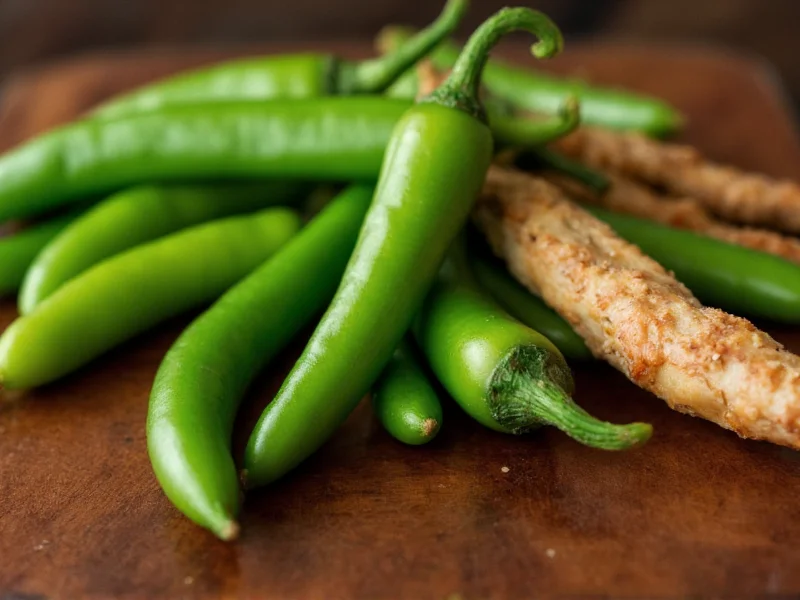Understanding the relationship between chipotle peppers and jalapeños clears up common culinary confusion. Many home cooks wonder is chipotle jalapeño a distinct pepper variety or simply a preparation method. The answer lies in the transformation process that turns ordinary jalapeños into the distinctive chipotle peppers found in Latin American cuisine.
From Jalapeño to Chipotle: The Transformation Process
Jalapeños start as fresh green peppers commonly used in salsas and nachos. When allowed to fully ripen to a deep red color, they become ideal candidates for becoming chipotles. The critical step involves smoke-drying these ripe jalapeños over wood fires, traditionally oak or pecan, for several days. This dehydration process reduces moisture content while infusing the peppers with characteristic smokiness.
The word \"chipotle\" itself comes from the Nahuatl language (spoken by the Aztecs), combining \"chil\" (chili pepper) and \"poctli\" (smoked). This etymology confirms that smoking defines the chipotle—without this step, you simply have a ripe red jalapeño.
Flavor and Heat Comparison
Understanding chipotle pepper vs jalapeño heat levels helps cooks make informed substitutions. Fresh jalapeños typically range from 2,500 to 8,000 Scoville Heat Units (SHU), while chipotles measure between 5,000 and 10,000 SHU. The drying process concentrates capsaicin, making chipotles noticeably hotter than their fresh counterparts.
| Characteristic | Raw Jalapeño | Chipotle Pepper |
|---|---|---|
| Color | Green (sometimes red when ripe) | Dark brown to mahogany |
| Flavor Profile | Grassy, bright, vegetal | Smoky, earthy, complex |
| Texture | Crisp, juicy | Leathery, dried |
| Common Forms | Fresh, pickled, canned | Dried, in adobo sauce, powder |
Common Misconceptions About Chipotle Jalapeños
Many people search what is a chipotle jalapeño because of marketing confusion. Grocery stores sometimes label canned chipotles as \"chipotle jalapeños,\" creating unnecessary terminology overlap. Technically, once a jalapeño is smoked and dried, it ceases to be a jalapeño and becomes a chipotle.
Another frequent question is are chipotles just smoked jalapeños. The answer is yes—but with important nuance. Only fully ripe red jalapeños make authentic chipotles. Green jalapeños lack the sugar content needed for proper smoke-drying and develop off-flavors when processed this way.
Culinary Applications and Substitutions
Chefs value chipotles for their ability to add depth to dishes where fresh jalapeños would provide only heat. The smokiness works particularly well in:
- Mole sauces
- Braised meats
- Bean dishes
- Marinades
- Bloody Mary cocktails
When recipes call for chipotle in adobo sauce (a common preparation), they're using chipotles rehydrated in a tangy tomato-vinegar sauce. This versatile ingredient adds both heat and complexity to dishes. If substituting, remember that can I substitute chipotle for jalapeño depends on the desired flavor profile—chipotle brings smokiness that fresh jalapeños cannot replicate.
Storage and Preparation Tips
Dried chipotles keep for up to a year in airtight containers away from light. For best flavor, toast them lightly in a dry skillet before rehydrating in hot water for 20-30 minutes. Canned chipotles in adobo maintain quality for 6-8 months refrigerated after opening.
When handling either pepper, wear gloves to prevent capsaicin burns. Never touch your face after handling hot peppers, and always wash cutting boards and utensils thoroughly afterward.
Understanding Chipotle Adobo Sauce
Many confuse chipotle adobo sauce ingredients with the peppers themselves. Authentic adobo sauce contains rehydrated chipotles blended with vinegar, garlic, oregano, and sometimes tomatoes. This sauce preserves the chipotles while adding complementary flavors. The canned product found in supermarkets typically contains whole chipotles submerged in this sauce.











 浙公网安备
33010002000092号
浙公网安备
33010002000092号 浙B2-20120091-4
浙B2-20120091-4